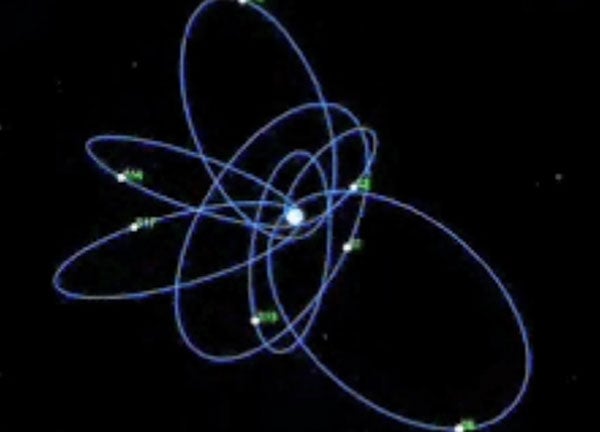Two groups of astronomers have separately tracked the orbits of tens of stars at the center of the Milky Way for about 20 years. These observations provide the strongest evidence that a supermassive black hole exists at that location. The scientists have obtained enough detail to determine the exact orbits of a handful of those stars — they move in ellipses (like the planets in our solar system) and thus are clearly orbiting a single object.
Both teams — one led by Reinhard Genzel of the Max Planck Institute for Extraterrestrial Physics in Garching, Germany, and the other led by Andrea Ghez of the University of California, Los Angeles — calculated the mass of that mysterious single object. The center of our Milky Way holds a supermassive black hole (called Sagittarius A*) about 4 million times as massive as our Sun.
Below is an animation of the movement of stars nearest the supermassive black hole created from data compiled from Genzel’s team.










